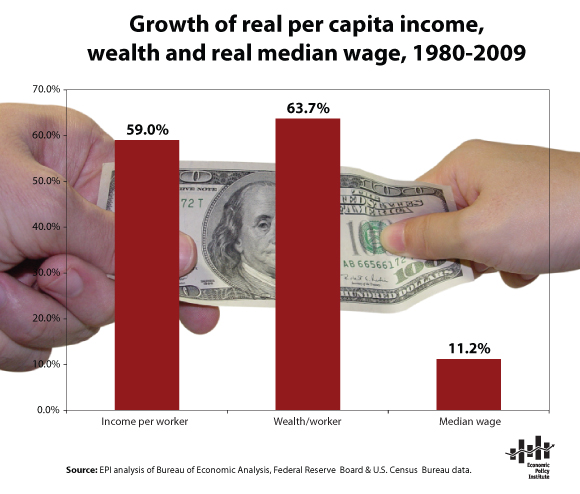Over the last 30 years there has been very modest wage growth for the typical worker. This is not because the economy was weak and employers were strapped for cash or profits. The economy enjoyed soaring productivity between 1980 and 2009. The Figure compares median wage growth over that period to average gross domestic product growth per worker, a measure of what each individual worker, on average, contributed to the overall economy. This is equivalent to the growth of income per worker as well. While average income per worker grew 59.0%, median wages grew by just 11.2%. Over this same period the amount of wealth (household assets less liabilities) per worker grew by 63.7%.

This modest wage growth was not the result of a broken economy: rather, modest wage growth is the result of the way the economy has been designed to work. Essentially, economic policy of the last three decades has not supported good jobs. The focus instead has been on policies that claimed to make consumers better off through lower prices: deregulation of industries, privatization of public services, the weakening of labor standards such as the minimum wage, erosion of the social safety net, expanding globalization, and the move toward fewer and weaker unions. These policies have served to undercut the bargaining power of most workers, widen wage inequality, and deplete access to good jobs. In the last 10 years, even workers with a college degree have failed to see any real wage growth.
